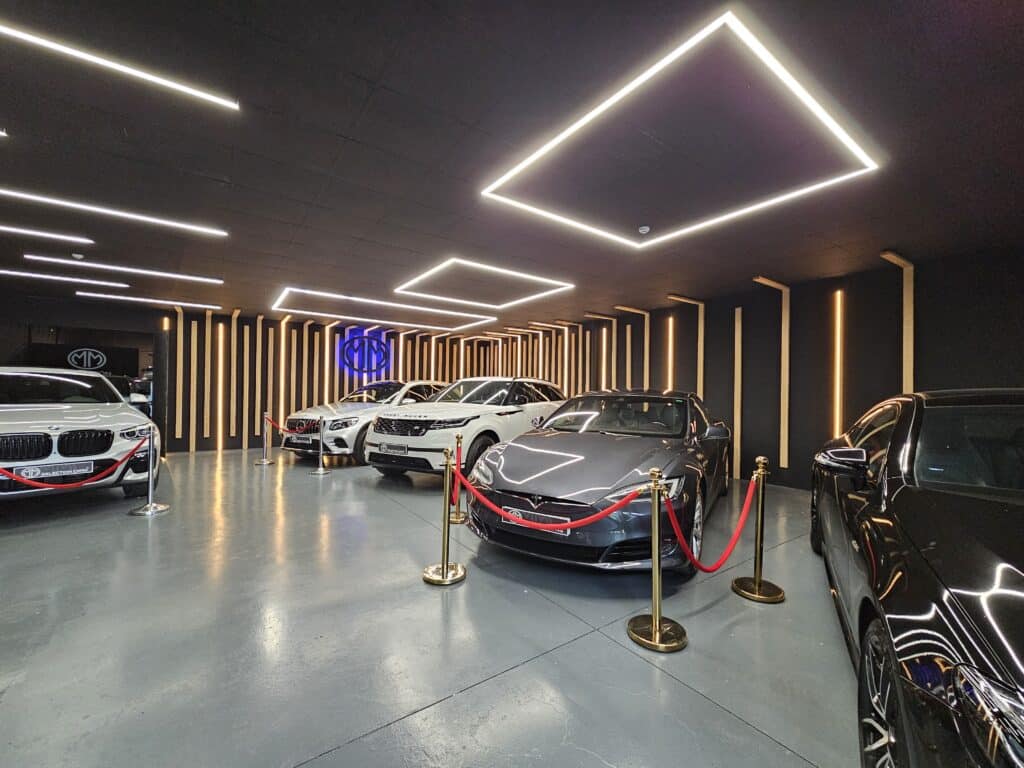Linear systems Part 1: LED strips
When it comes to a lighting product family, whether for indoor or outdoor use, that provides numerous possibilities for versatility and functionality, LED strips fit the bill.
It’s undeniable that since the advent of LED strips, installations using linear lighting have experienced remarkable growth, becoming one of the most widely used product families for any lighting project, whether residential, contract or retail.
Certainly, before the era of LED, many installations utilised linear lighting, especially for indirect or direct light, initially employing T8 fluorescent tubes, later T5 tubes, and currently, both options are being upgraded through heat sinks and LED strips.
With less maintenance (if LED strips are properly installed), improved colour rendering, higher CRI and various installation and power options, our focus is on professional LED strips and MBTS (24 V).
What should we consider first?
This question is common among the enquiries from our customers, so we’ll break it down into several points, please read carefully:
1 – Installation type Embedded, surface-mounted, suspended, indoor, outdoor, etc.? Selecting the best heat sink and the most suitable LED strip.
The first thing to know and consider is how your LED strip will be installed to choose the best heat sink. (The placement of all LED strips, except some Neon Flex models, on heat sinks). There are numerous possibilities within heat sinks: surface-mounted, suspended, regular embedded, trimless embedded, etc.
Many times, the choice of the LED strip influences the choice of the heat sink; for instance, IP65 or higher strips cannot be installed on all heat sinks. If your installation requires a high IP, keep that in mind when choosing; it might not be suitable.
2 – Lighting needs Will it be indirect, “decorative” or diffused direct lighting for technical use? The importance of choosing the LED strip with the most suitable lm/w performance.
Once it’s clear that your strip and heat sink are compatible, it’s time to choose the strip’s power and other factors such as colour temperature or CRI, as well as whether they will be monochrome, tunable white, RGB, RGBW or RGB+CCT.
¿Y como se que potencia de tira LED debo elegir para mi espacio o aplicación? There’s no trick that guarantees your choice is the best, but here are some tips that may be useful:
– 4.8 W Signage where the profile will not be visible. “Deltail” lighting.
– 9.6 W Niche lighting, shelves, mirrors, maximum 1 metre of surface to illuminate.
– 14 W The most commonly used. For recessed lighting used as indirect light, also suitable for direct light.
– 12W HE, 18W and 24W Technical lighting when higher light values are required. Direct light in dressing rooms, offices, retail, contract, etc.
Note: Consider the losses caused by the installation of the LED strip inside the profile and the losses caused by the diffuser, which average around 40%. Example: LED strip 14.4 W per metre 4000 K = 1428 lm/metre – 40% 856.80 lm/metre.
3 – Regulation types if applicable Will the intensity, colour temperature, etc., be regulated? Via 0-10 V, DALI, RF, Voice, etc.?
We have the heat sink, we have the LED strip, and now we need the power supply and controllers if the strips are going to be regulated or if we have chosen some of the tunable white, RGB, RGBW or RGB+CCT strips.
One of the most common mistakes is not choosing the power supply correctly, as you must always consider a 20% reserve when calculating the consumption in watts.
Example: 5 metres of 14.4 W = 72 W + 20% = 86.4 W Recommended power supply 100 W.
If the LED strip is going to be regulated at the power supply header using TRIAC, 0-10 VDC or DALI protocols, you must choose a power supply according to that regulation and add the necessary components to perform the regulation (we’ll discuss this in another post). If, on the other hand, you are going to control and regulate it using controllers, whether via RF or Wi-Fi, the power supplies can be ON-OFF since this regulation works with the output voltage of the 24 VDC power supply.
We hope that we have helped to clarify more concepts and doubts about linear lighting, and we will continue with Part 2 in the near future.


